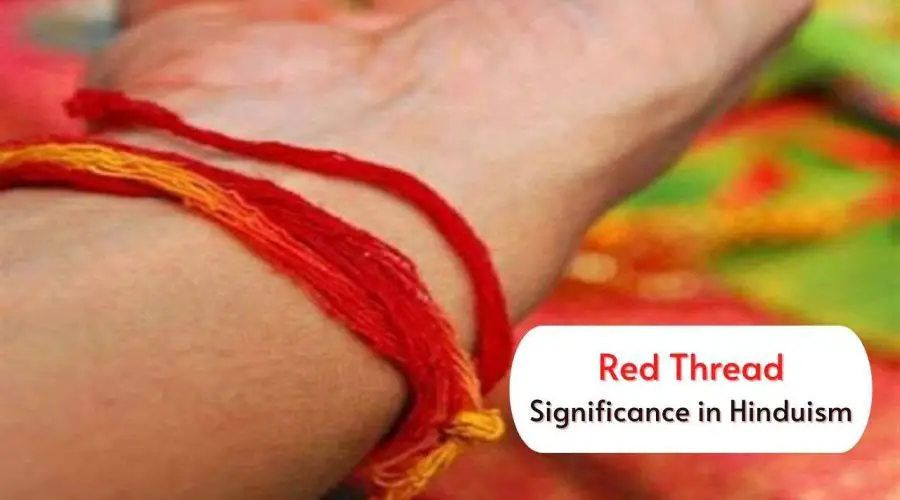Do you know why Hindus tie a red thread at the beginning of a Religious Ceremony?
Hindus tie a thread called Mauli, Kalava, or Charadu around their wrists before commencing a religious event.
Male tie the thread on their right hand, whereas females knot it on their left. The thread is tied to invoke the blessings of Hindu gods, particularly the deity to whom the puja is devoted.
According to legend, Lord Vishnu knotted a red thread on the hands of King Bali during his incarnation as Vamana to bestow him immortality and reign over the netherworld.
There’s also a prevalent idea that wearing a sanctified red thread with the deity’s blessing can protect you from sickness, adversaries, and other perils.
Frequently Asked Questions
1. What is the red string that Hindus wear?
Kalava is traditionally worn on the right wrist by men and the left wrist by women. Some Hindus remove the symbolic bracelet immediately after worship, while others do so only after replacing it with a fresh one.
2. What is sacred thread ceremony in Hinduism?
In some Hindu communities, the Sacred Thread ceremony is held to confirm that boys have reached the age of religious obligation. Girls are occasionally honoured in the same fashion, although receiving and wearing the thread is uncommon.
3. Why do Hindus wear red string wrist?
According to Indologist Gudrun Bühnemann, the red-coloured thread symbolises Vishnu for men and Lakshmi for women in the regional Vaishnavism Hinduism tradition found in Maharashtra.
4. Can a girl wear Janeu?
Girls in a Bihar hamlet wear the ‘janeu,’ or sacred thread, which is normally reserved for men or boys, according to a four-decade-old tradition.

